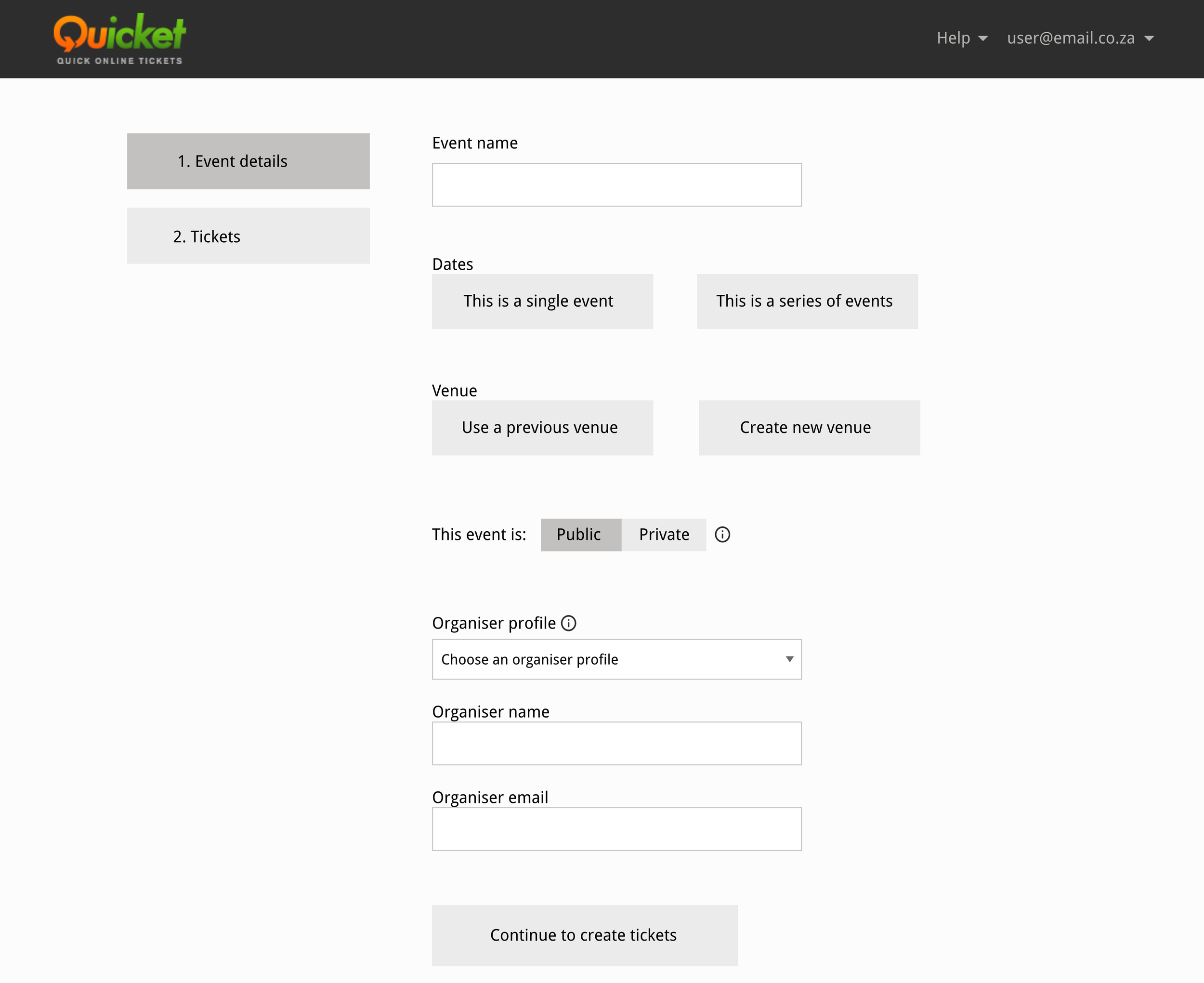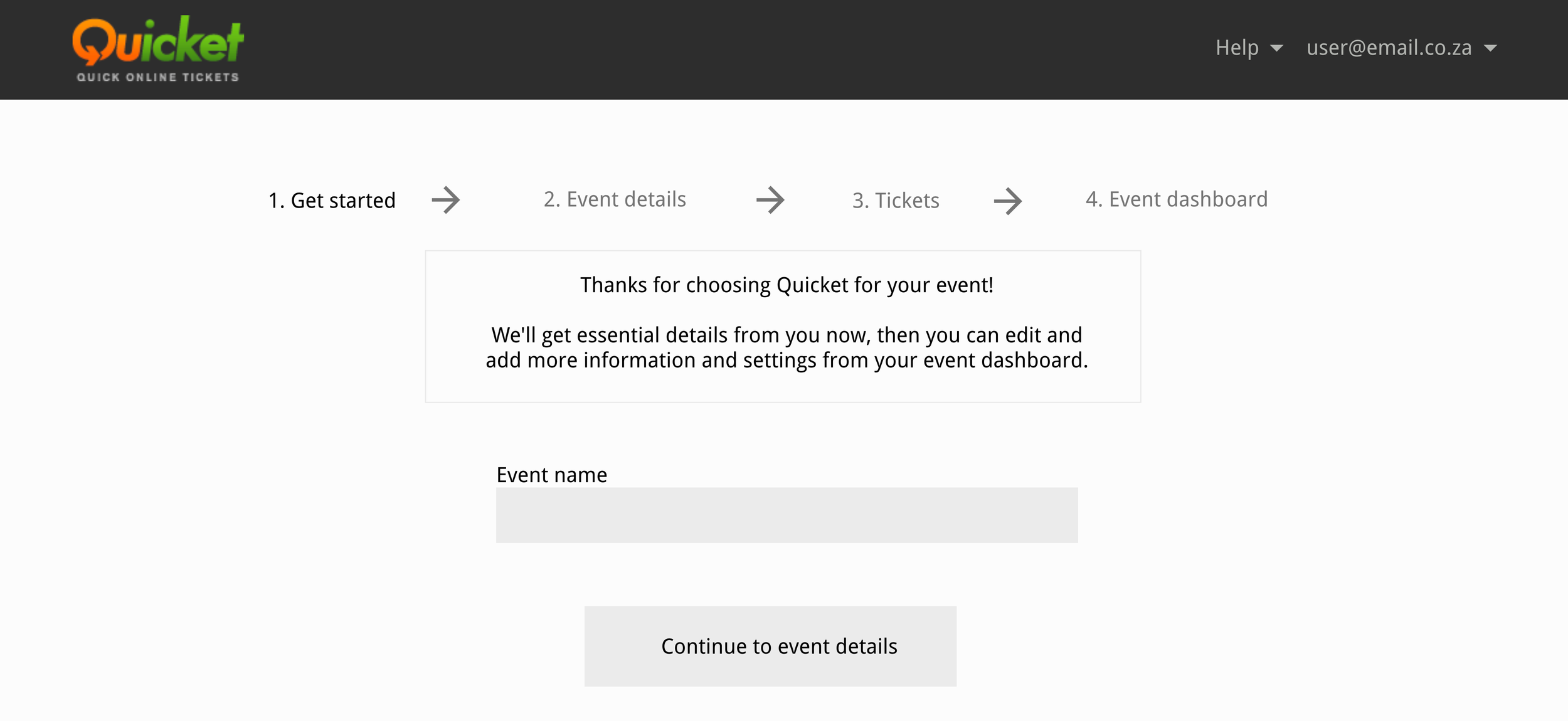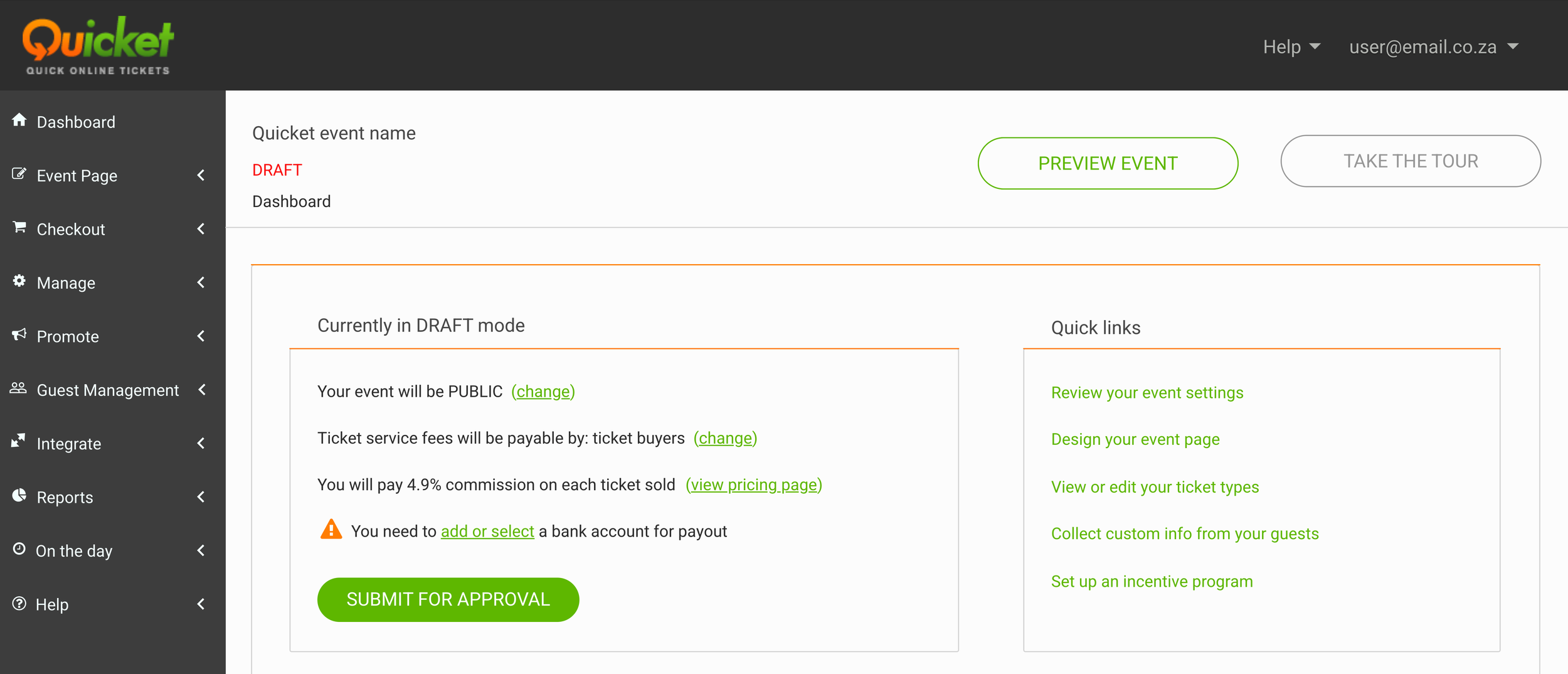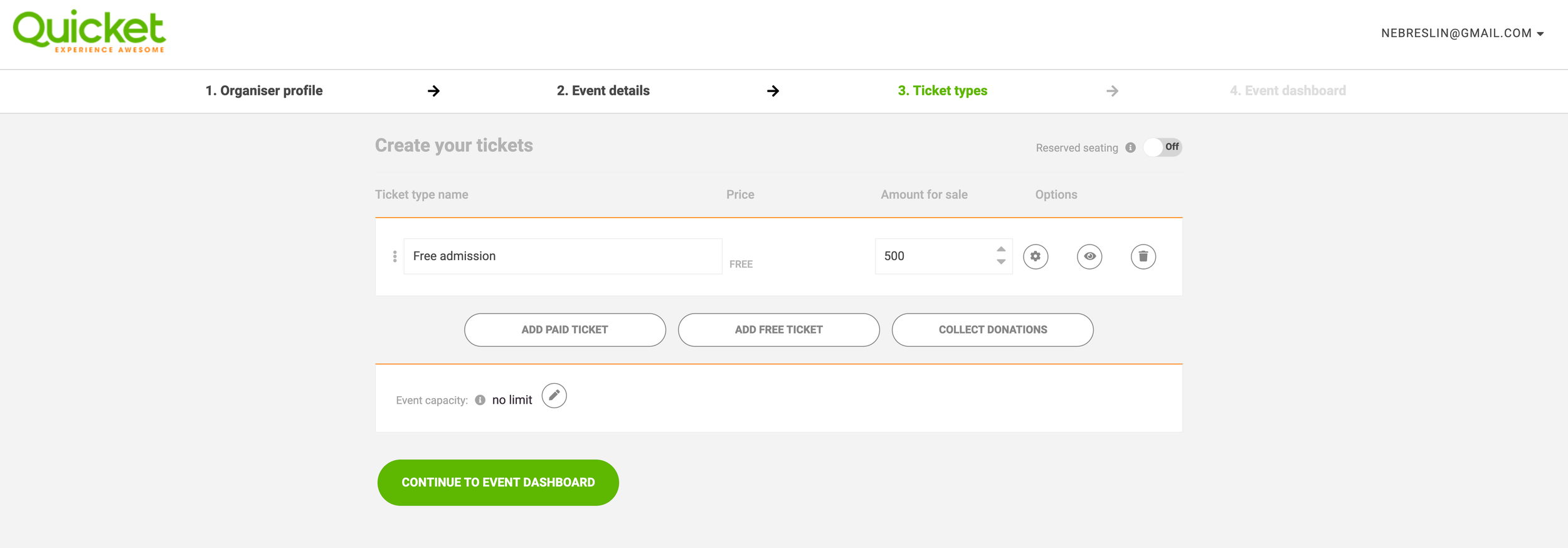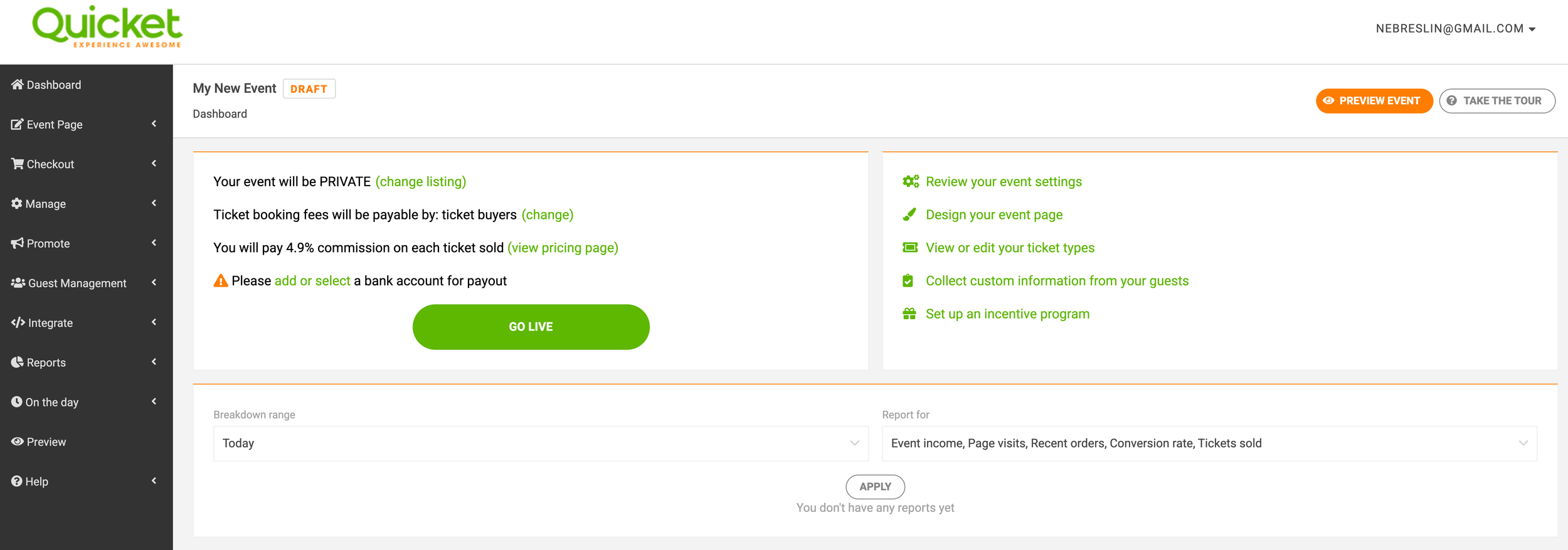Redesigning an onboarding flow
Overview
The Quicket event onboarding flow, or event creation process, is used by event organizers to set up a public or private event page to sell tickets on Quicket. When an organizer completes the event creation process, they land on the dashboard homepage where they'll find more options to manage their event.
The problem
As more event organizers joined the platform, the amount of support queries was growing at an unsustainable rate. About 50% of the queries from event organizers were related to setting up their event, including the two-step event creation process that had grown hard to navigate since it was first built in 2011.
My contribution
Research: analyzed support cases and surveys from event organizers
Design: built wireframes and prototypes of new event creation process and dashboard
Content: wrote all new microcopy, help articles and transactional emails
Constraints
In the beginning of the project, the frontend developer I worked with was freelance and based overseas, so we sometimes had trouble finding time to collaborate. The project spanned over a few months, however, and by the end, he was mostly full-time with Quicket and carving out collaboration time was much easier.
Research and findings
I analyzed two months of email support from organizers as well as survey results from an email they receive when their event ends. I also asked my Product Manager to check the database to see how many events had settings changed from the default options we provided during event creation. I wanted to trim down the forms but needed to ensure I wasn’t removing settings that organizers expected to find there. We found that:
Except for the setting “Event listing” (“public” or “private”), only 10% of events had changed settings from the default options.
Organizers were frustrated that they had to complete the full event creation process in one sitting, as it was essentially one very long form.
Organizers didn’t know where or whether they could edit certain details from their dashboard after completing event creation.
A key takeaway was that the event dashboard didn’t provide the tools needed after creating an event. I met with my PM and the CEO and convinced them we needed to widen the scope of the project to include redesigning the dashboard, even though it meant adding more time to the project.
Design iterations
Based on the data, I felt confident removing “Event Settings” as long as organizers could still choose to list their event as “public” or “private.” I also added a step indicator, dividing the long form into 2 pages.
For the section “Event dates", we had 2 options organizers could choose from: an event with one start date and one end date or an event with multiple start dates and multiple end dates. When referring to the latter, our event organizers tended to call it a “series of events” or an “event series”, so I changed the option to match the language they already used.
Section of original event creation: Event dates and Venue
First iteration of new event creation
In the second iteration, I included the dashboard in the step indicator because I wanted organizers to view it as a continuation of the event creation process where they could keep adding and editing information. I also moved the step indicator to the top of the page and added arrows between steps. I was concerned that the steps to the left of the page looked like buttons, making each one appear as an option rather than a required step.
Second iteration of event creation
For the event dashboard, I highlighted important information about the event, such as whether they needed to add their bank account and with a link to do so.
In the first iteration, I had the dashboard divided into tabs, “Insights” and “Configuration”, where “Insights” displayed some event details and reports and “Configuration” consisted of the “Event Settings” removed from event creation. When I showed this to the devs, they let me know could they could add “Event Settings” as its own page in the menu, and I agreed that made more sense than adding it to the dashboard. In the next iteration I removed the tab for “Configuration” but did add a link to the new “Event Settings” page.
First iteration of event dashboard
Second iteration of event dashboard
Solution
The section “Organiser Profile” was under “Event Details” in the old event creation process, but I realized this didn’t make hierarchical sense. Organizer profiles act as a brand or company, where organizers can group multiple events under one profile. Because of this, it made more sense for organizers to create or select a profile before adding event details.
New event creation (step 1)
As an organizer moves through the steps, the previous steps are bolded and clickable. The organizer can go back to any step to view and edit the details, or they can leave the event creation process and come back at a later time to pick up where they left off.
New event creation (step 3)
In the dashboard, I removed the event page link if the event was in "draft", as I found that organizers would often share the link before the event was live, leading potential ticket buyers to an error page. Once it’s live, the event link is available for the organizer to share with their network.
Old dashboard in “draft”
New dashboard in “draft”
To ensure our existing organizers weren't overwhelmed by the changes, we sent an email to all organizers that had a “live” or “draft” event which included links to help articles I created explaining and mapping out the new pages.
Snippet of new dashboard help article
Lessons and impact
The frontend developer on this project was the first teammate that I ever worked with remotely which was a great learning experience and something I couldn’t have imagined would prove to be so useful. After this project ended he even became a valuable mentor as I learned to code and become a frontend developer myself.
About 6 months after the rollout, I did another analysis of our organizer support cases and found that queries related to setting up an event were reduced by 29% while event creations increased by 9%. While the increase in conversions could have been due to a number of factors, including an increase in public awareness towards Quicket, I do tend to attribute the reduction of support cases to the redesign. The reduction of support cases alongside the increase of event conversions proved to my team and me that we implemented a scalable solution for Quicket and its event organizers.
